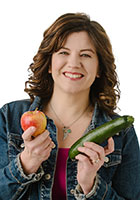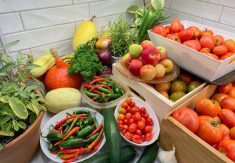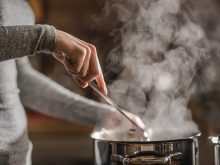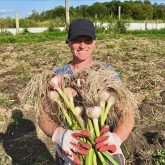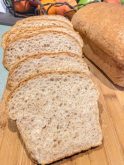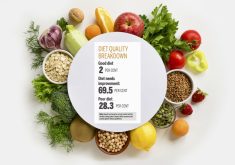There’s a sugar shortage in Western Canada but your baking plans need not be kiboshed. Despite the bare sugar shelves in the grocery store, there are sweet alternatives to rescue your holiday treats and maintain the festive spirit.
The science of sugar
Before we use sugar substitutes, it’s important to understand the multiple roles that sugar plays in baking. Sugar sweetens our favourite treats and also contributes to texture, tenderness, colour and moisture. It aids in leavening, provides structure and enhances flavour.
Read Also

100TH ANNIVERSARY: Where does ‘co-op’ fit in the Manitoba Co-operator after a century of farm reporting?
The Manitoba Co-operator is no longer owned by a co-operative, as it was at the start of its run, but Manitoba’s farm paper still reflects the spirit of co-operation that built this province
Certain types of baking are more adaptable to sugar substitutes than others. Quick breads, muffins and cookies are quite easy to modify, while delicate cakes, meringues and royal icing are not as forgiving.
That means you should be strategic with the sugar you do have. Save it for recipes that you cherish and that are the least flexible.
Swapping sugars
The easiest fix is to simply swap the type of sugar. Alternatives require a little more experimenting but can produce tasty results.
- Sugar in the raw (demerara or turbinado sugar) adds natural molasses and has larger crystals, offering a crunchy texture. There is also no need to adjust the quantity used from the recipe.
- If granulated sugar is off the shelves but there are still bags of brown, you can easily substitute. Brown sugar adds darkness, caramel flavour and moisture, making cookies more tender. Use the same amount of brown sugar as you normally would, but reduce other liquids by one to two tablespoons.
- Powdered or icing sugar is finer and includes cornstarch for soft, tender cookies. Here, you’ll have to adjust the recipe for best results. Use 1 3/4 cups unsifted powdered sugar per cup of granulated sugar.
You also have the option of using liquid.
- Honey, maple syrup or agave are sweeter, more acidic, and will brown more quickly than sugar. Reduce how much you use (three-quarters of a cup for every cup in the recipe), reduce other liquids by a quarter of a cup and lower your baking temperature by 25 F. You should also add a pinch of baking soda.
- Corn syrup or brown rice syrup are less sweet than sugar. Use one cup corn syrup or 1 1/4 cups brown rice syrup per cup of granulated sugar; reduce liquid by a quarter of a cup and lower baking temp by 25 F.
- Molasses has a robust, bittersweet flavour. Use 1 1/3 cups molasses for each cup of granulated sugar; reduce liquid by five tablespoons and add half a teaspoon of baking soda. It is not recommended to replace more than half of your sugar with molasses. Instead, mix and match with other replacements.
Fruit puree is another source of natural sweetening for baking. It’s best for quick breads, muffins, pancakes and some drop cookies. It’s also useful in combination with other sweeteners.
Overripe bananas, for instance, can be mashed and substituted at a rate of half a cup per full cup of sugar. If opting for this, other liquids should be reduced. Applesauce is another option. Use three-quarters of a cup for every cup of sugar and, again, reduce liquid.
Artificial sweeteners
These can vary greatly in flavour, intensity of sweetness and function. Some are easily substituted for sugar, but some are not recommended for baking. Choose carefully and follow instructions on package.
Those opting for stevia should know that it has a very intense flavour and adds only sweetness. It doesn’t mimic any of sugar’s other functions. The best practice is to use one teaspoon of stevia powder or two to three drops of liquid stevia per cup of sugar, and then bulk out with a third of a cup of applesauce, pumpkin puree or yogurt.
Xylitol looks similar and is as sweet as sugar, but does have a distinct flavour. It does not cause browning and absorbs moisture. You don’t need to adjust quantities, but should bake a little longer for some browning.
Impacts of substitutions
When making substitutions, expect the final texture and flavour to be slightly different from the original. Accept and enjoy these differences and take the opportunity to reflect on how resourceful our great grandparents had to be all the time.
DIY Brown Sugar

If you have granulated sugar and molasses, you can make your own brown sugar,
Ingredients:
- 1 cup granulated sugar
- 1-3 tbsp molasses
Instructions
In a bowl, combine sugar with a tablespoon molasses, stir vigorously or use a hand blender to thoroughly mix until it looks like brown sugar. Add more molasses as desired to make darker brown sugar. Store in an airtight container as you would store-bought brown sugar.
Nutty Cranberry Muffins

This delicious everyday muffin is ideal for a grab-and-go breakfast or snack.
Ingredients:
Muffins
- 1 cup large-flaked oats
- 1 cup buttermilk *
- 1 cup whole wheat flour**
- 1 1/2 tsp baking powder
- 1/2 tsp baking soda
- 1 tsp cinnamon
- 1/4 tsp salt
- 1/2 cup brown sugar or honey
- 1/3 cup canola oil
- 1 tsp vanilla extract
- 1 egg
- 2/3 cup sliced fresh or frozen cranberries
- 1/4 cup chopped walnuts or sunflower seeds
Topping
- 1/2 tsp cinnamon
- 2 tbsp chopped walnuts
Instructions
Preheat oven to 375 F (190 C). Lightly grease a muffin pan or line with papers.
In large bowl, mix oats and buttermilk. Let stand for 15 minutes.
In separate large bowl, mix flour, baking powder, baking soda, cinnamon and salt. Mix brown sugar/honey, oil, vanilla and egg with oats. Stir wet ingredients into dry ingredients until just combined. Add cranberries and walnuts.
Spoon into muffin pan. Combine topping ingredients and sprinkle on muffins.
Bake for 15 to 17 minutes until tops are firm to touch.
Recipe notes
*To make a substitute for buttermilk, place a tablespoon of lemon juice in a measuring cup. Add enough milk to make 1 cup; let sit for five minutes.
**If using all-purpose flour, use one cup and three tablespoons of all-purpose flour or, for more fibre, add one cup all-purpose flour and two tablespoons ground flax.
Honey Ginger Snap Cookies

Try this holiday cookie featuring both honey and molasses, no sugar required.
Ingredients:
- 1⁄2 cup butter
- 1⁄4 cup coconut oil
- 1⁄2 cup honey
- 3/8 cup molasses
- 1 egg
- 1 tsp vanilla
- 4 1⁄2 cup wheat or spelt flour
- 1⁄2 tsp salt
- 2 tsp soda
- 1 tsp baking soda
- 1 tsp cinnamon
- 1⁄2 tsp ground cloves
- 1⁄2 tsp ground ginger
Instructions
Cream butter, oil, honey and molasses in mixer. Add egg and vanilla. Mix well.
Combine flour, salt, baking soda and spices in separate bowl. Slowly add dry mixture to wet until well mixed.
Drop by spoonfuls onto greased cookie sheet. Bake at 350 F (180 C) for 10-12 minutes.
Let cool five minutes, then store in an airtight container.

